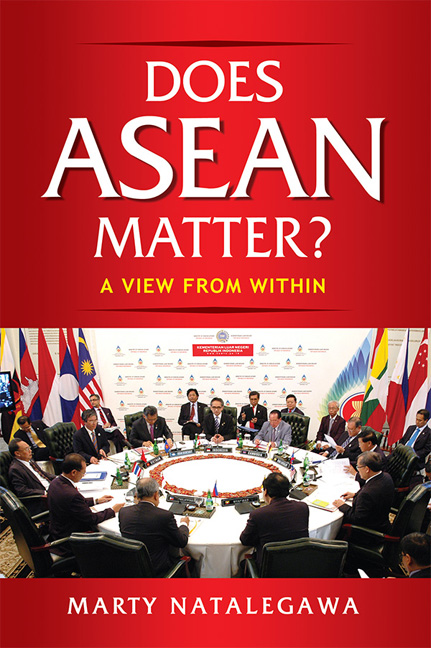Book contents
- Frontmatter
- Dedication
- Contents
- Introduction
- 1 Statecraft and Diplomacy in a World Transformed: 1967–2017
- 2 Southeast Asia: From Trust Deficit to Strategic Trust
- 3 ASEAN and the Region: From Cold War Pawn to ASEAN Centrality
- 4 From State-centric to People-centred ASEAN
- 5 ASEAN: Wither or Prosper?
- Appendix 1 Guidelines for the Implementation of the DOC
- Appendix 2 Declaration of the East Asia Summit on the Principles for Mutually Beneficial Relations
- Appendix 3 Statement of Asean Foreign Ministers on Asean's Six-Point Principles on the South China Sea
- Index
- About the Author
- Plate section
Appendix 2 - Declaration of the East Asia Summit on the Principles for Mutually Beneficial Relations
Published online by Cambridge University Press: 08 June 2019
- Frontmatter
- Dedication
- Contents
- Introduction
- 1 Statecraft and Diplomacy in a World Transformed: 1967–2017
- 2 Southeast Asia: From Trust Deficit to Strategic Trust
- 3 ASEAN and the Region: From Cold War Pawn to ASEAN Centrality
- 4 From State-centric to People-centred ASEAN
- 5 ASEAN: Wither or Prosper?
- Appendix 1 Guidelines for the Implementation of the DOC
- Appendix 2 Declaration of the East Asia Summit on the Principles for Mutually Beneficial Relations
- Appendix 3 Statement of Asean Foreign Ministers on Asean's Six-Point Principles on the South China Sea
- Index
- About the Author
- Plate section
Summary
WE, the Heads of State/Government of the Member States of the Association of Southeast Asian Nations (ASEAN), Australia, the People's Republic of China, the Republic of India, Japan, the Republic of Korea, New Zealand, the Russian Federation, and the United States of America on the occasion of the Sixth East Asia Summit.
REITERATING our commitment to the purposes and principles of the Charter of the United Nations, the Treaty of Amity and Cooperation in Southeast Asia and other recognized principles of international law.
RECALLING the 2005 Kuala Lumpur Declaration on the East Asia Summit and reaffirming its importance in setting the broad vision, principles, objectives and modalities of the East Asia Summit (EAS).
RECALLING ALSO our commitment in the 2010 Ha Noi Declaration on the Commemoration of the Fifth Anniversary of the East Asia Summit to redouble efforts to move progress and cooperation in priority areas of the EAS and other wider regional economic integration efforts including studies on East Asia Free Trade Area (EAFTA) and Comprehensive Economic Partnership for East Asia (CEPEA).
UNDERLINING our common vision of the EAS as a Leaders-led forum for dialogue on broad strategic, political and economic issues of common interest and concern with the aim of promoting peace, stability, and economic prosperity in East Asia.
DESIROUS of consolidating and strengthening the EAS on the basis of its established principles, objectives and modalities.
REAFFIRMING ASEAN as the driving force in the EAS, working in close partnership with the other participants of the EAS.
REITERATING ALSO that the EAS is an integral part of the evolving regional architecture which includes other mutually-reinforcing processes such as ASEAN+1, ASEAN+3, the ASEAN Regional Forum (ARF), and the ASEAN Defense Ministers’ Meeting Plus (ADMM+).
WELCOMING the participation of the Russian Federation and the United States of America at the East Asia Summit.
RECOGNIZING that the international law of the sea contains crucial norms that contribute to the maintenance of peace and stability in the region.
DESIROUS ALSO of creating a peaceful environment for further enhancing cooperation and strengthening the existing bonds of friendship among our countries in keeping with the principles of equality, partnership, consultation, and mutual respect thereby contributing to peace and stability, and prosperity in the region and the world at large.
- Type
- Chapter
- Information
- Does ASEAN Matter?A View from Within, pp. 237 - 238Publisher: ISEAS–Yusof Ishak InstitutePrint publication year: 2018

